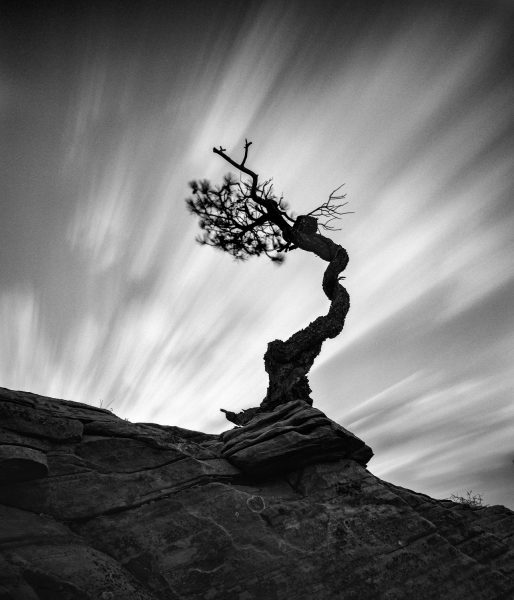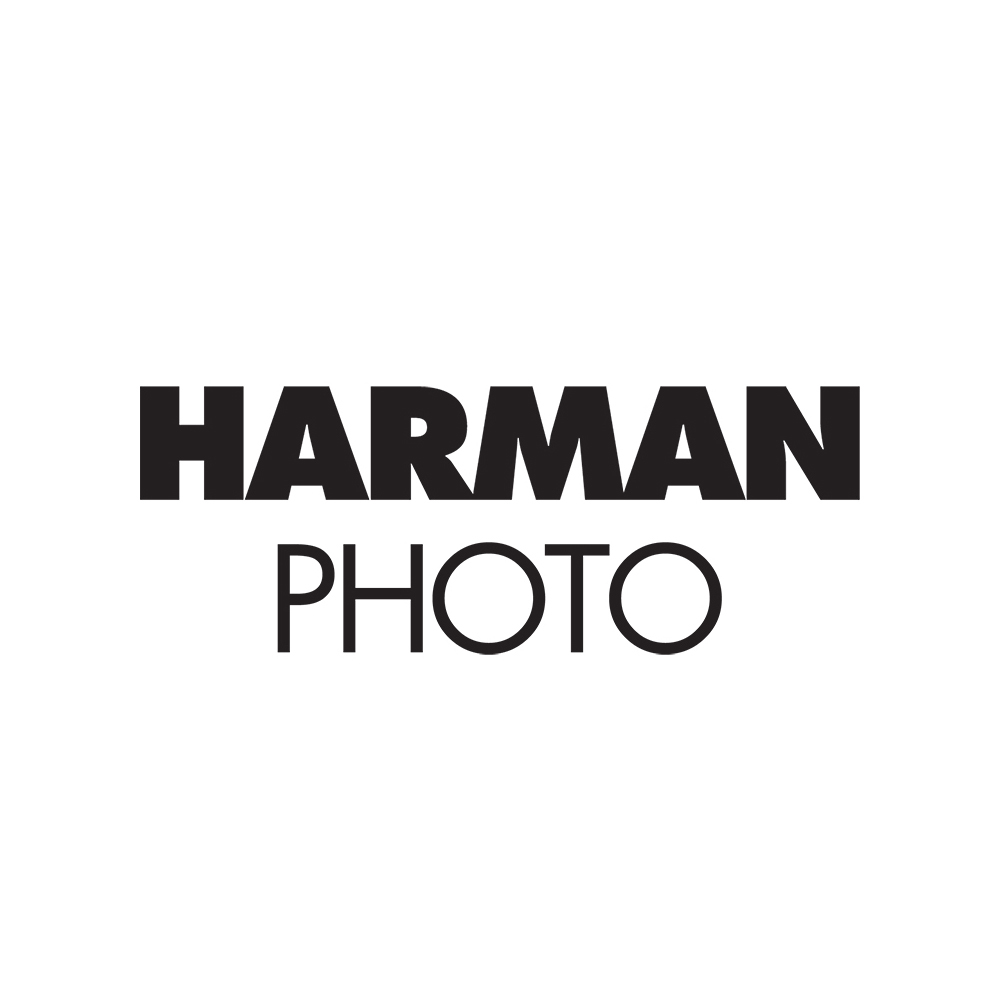How I got this picture - Raynor Czerwinski Posted On 5th April 2018 To How I got this picture

Tree #8

Technical info:
Film Used: Ilford FP4
Format: 6x7
Camera: Mamiya 7ii
Lens: 43mm
Exposure time: 3 min
Other equipment: Lee Filter holder, Lee 4 stop nd, Lee Red #25 filter, B&W 105mm Polarizer, Gitzo Tiopod, Acratech Ballhead.
Location: Zion National Park
Tell us the story behind this image. What inspired you to shoot it?
A couple good friends of mine who know Zion quite well introduced me to this fantastic little tree last Fall. The tree is about 9 feet tall and high up on a ridge not far from the parks main thoroughfare, in fact once can see it from the road. We spent an day in this area looking for interesting subjects to photograph, this tree was one of the most beautiful by far.
In this example of the tree and streaking clouds, it was about 3:30 in the afternoon. High contrast light, deep blue skies, and fast moving clouds. I thought by using a Red #25 filter, ND’s and a polarizer I could turn that blue sky black and create some interesting effects with the cloud movement. The wonderful thing about shooting Black and White film, is one can shoot it all day long in many different lighting conditions and still get fantastic images.
I have been working exclusively with Velvia 50 for the last 12 years. That had been a fantastic experience, but I had dug myself into a creative rut without knowing it. In my opinion, Velvia sings in soft, low contrast light, and that had been the only light I worked with for over a decade. Furthermore, most of the places I shoot these days are at high altitude. In these environments, high contrast light is the norm. The golden hour at these heights is generally the golden 10 minutes at best, so that reduced my shooting time to less than 30 min a day when using Velvia 50.
In an attempt to open a more synergistic dialogue with the landscape, I started carrying 2 additional films in my bag. Fuji Pro 400H and Ilford FP4. If the landscape was dark, monochromatic, or moody, I would meet the scene halfway with Ilford B&W film. Soft light and rich pastel colors? Velvia 50. If the light was bright and breathy, out came the Pro-400.
An amazing thing has happened since I adopted this 3 film approach; I have absolutely no expectations when I go out and shoot. I simply show up with an open mind, see what the landscape is showing me, and try and meet her halfway. This has been incredibly liberating, I can now shoot in almost any kind of light and shoot almost all day long if I wish.
Did you come across any challenges?
I'd say the only challenge I faced in making this image was getting an accurately exposed negative in regards to reciprocity failure. Ive been shooting this film for a couple years now, and often do exposures around the 5-10 min range. I get all my film scanned by a Noritsu, and that scanner need a slightly thinner negative (compared to a drum scanner) to get a good scan. So I continue to take good notes and slightly tweak exposure times to get a healthy scan from the Noritsu. I really enjoy working with film. Its a living breathing thing that takes a lot of time and devotion to fully understand it. Relationships take time, love, patience, and respect to fully blossom, and forming a healthy
relationship with a particular film stock is no different.
What process did you use (Tripod? Set exposure time? Filters? Lighting?)
I shot a number of different compositions of this wonderful crooked little tree. I also used varying exposure times from about 15 seconds to 9 minutes depending on my filter choices. In the end, I shot about 2.5 rolls (25 images) of this tree during this session out there.
As for additional photo gear, I used a Sekonic L-758dr light meter to spot meter the rock in shadow in the foreground and applied a -1 correction of that reading to get to my base exposure time. I also used a red #25 filter, 2-10 stop nd filters, and a polarizer. I also used a Gitzo tripod with an Acratech Head, and the best cable release ever made: the astounding Nikon AR-3
How did you process it?
I currently do not develop my own film, I rely on Richard Photo Lab to process and scan all my work. I am incredibly happy with their professionalism, knowledge, customer support, and consistency.
What about printing?
I use a couple different labs to print my work as well. WHCC for my paper light jet prints, and Magnachrome for metal prints.
About The Author

Raynor Czerwinski
Film, like the camera itself, is an integral part of Raynor’s art. “Film leaves room for variation, room for the unknown to happen, and that’s where some incredible things can happen”. The Japanese have, for centuries, understood the value of “wabi-sabi,” or “perfect imperfection” and Raynor has similarly been able to embrace the inconsistencies that film can create. “I’m trying to be an imperfectionist, really, in my photography, in my art, to
leave rooms for mistakes or anomalies. That’s where the real beauty comes from,” Raynor says. “Of course, strive for greatness in your craft. But perfection … it’s not for me.”
Instagram: @lucid_landscape
Web: lucidlandscape.com






